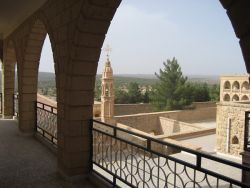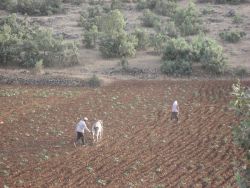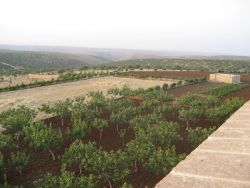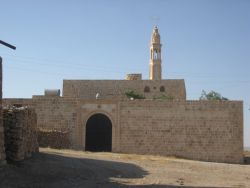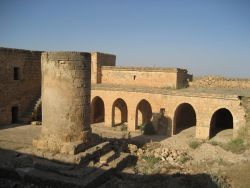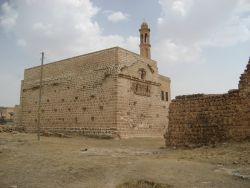Reflections on a recent trip to Tur Abdin
The “mountain of the adorers” is known especially on account of its monasteries. It continues to be affirmed, even if not everyone agrees, that before the arrival of Tamerlane and his hordes, which swept all before them in the fourteenth century, a little fewer than one hundred monasteries were active, with thousands of monks. However it maybe, even today are visible the traces of many monasteries. Some are reduced to a few ruins, others are well-preserved but without life, some are alive with a life sui generis. I am thinking of the splendid Deir da-Slibo, the Monastery of the Cross, where in a structure that is still perfectly monastic several families and one nun live together, having chosen in this way to give it life as far as they can, in a kind of living together of laity and religious dictated by necessity. Finally, there are a few monasteries that are still animated by lively, if tiny communities. These last are what I tried above all to get to know, sharing their life for a few days. These are four monasteries where some monks, some nuns, and various students with their teachers give witness to their faith.
Starting from the east, the first monastery to be still inhabited is Deir Zafaran (Monastery of Saffron). There resides the bishop of the town of Mardin, Mor Filoxinos Saliba Özmen, together with another monk, about ten students, their teacher (malfono Yaqub), and some laymen who run the monastery. Mor Gabriel, in the center of Tur Abdin, about twenty kilometers east of Midyat, is the other large monastery of the region and is also the residence of archbishop Mor Samuel Akta?, with whom live four monks, about fifteen nuns, and around thirty students with their teachers (two Isa, Gülten and Do?du, and others). Not far from Midyat to the north a third monastery to be still inhabited is Mor Yaqub of Salah. It arose next to a pagan temple, important remains of which the monks are bringing to light. It preserves still intact a church of the fifth century, around which an ample monastery has been built, which now houses two monks (fr. Daniel and fr. Saliba), four very lively nuns, and about ten boys, here too with their teacher. The fourth monastery to be still inhabited is Mor Malke, in the heart of Mount Izla (or Izlo), in the southernmost part of Tur Abdin, not far from what is considered as the most ancient monastery of the region, Mor Awgin. Here too there is a little flame, but with unforgettable intensity of light. The monastery, which goes back to the sixth century, but which more than once was destroyed and rebuilt, houses two monks (fr. Isho’ and fr. Aziz), one nun, and a few students.
These monasteriese remain visible and live witnesses to what had once been, amidst a thousand difficulties, the experience of men and women who have persevered and persevere in the Christian life, in their search for God or that recently have made abandoned places live again. What remains, thus, is a great deal, various and precious.
- 1
- 2
